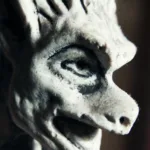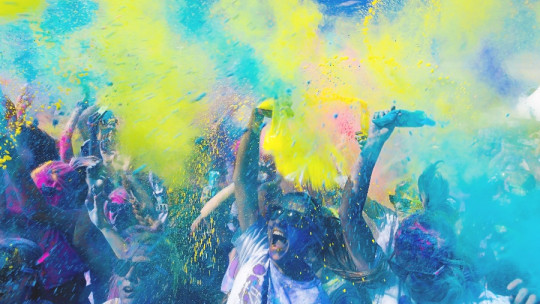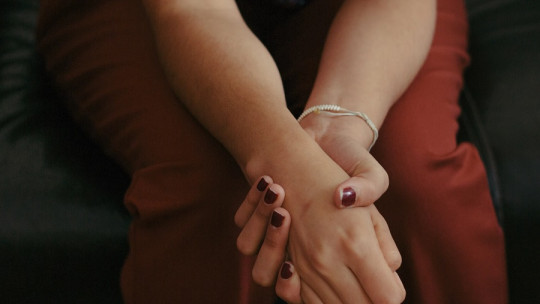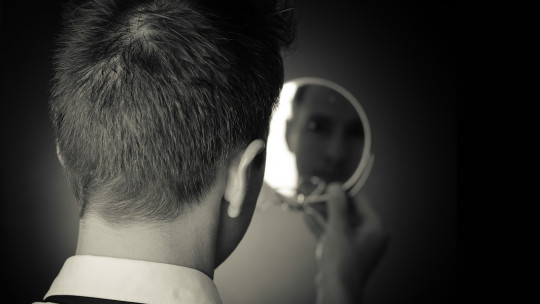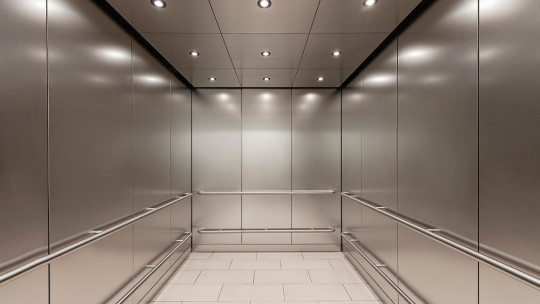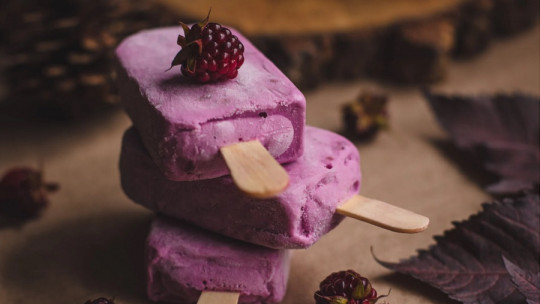Phobias are irrational and persistent fears to objects, living beings or situations that cause an intense desire to escape from them. If the person with a phobia cannot escape what causes fear, he or she suffers intense anxiety and discomfort, even though he or she knows that they are irrational and disproportionate to the real danger.
Trypophobia is an example of fear irrational to which an innate origin is usually attributed. In fact, it is a particularly well-known case among rare phobias because it has become a true Internet phenomenon. Let’s see what it consists of.
What is trypophobia?
The word “trypophobia” literally means “fear of holes” in Greek. The term is very recent and is even believed to have been coined in an Internet forum. More generally, it refers to anxiety caused by repetitive patterns, mainly of small agglomerated holes but also lumps, circles or rectangles.
Trypophobia is usually related to organic elements found in nature, such as lotus flower seeds, honeycombs, skin pores, cells, mold, corals or pumice stone. Objects created by people can also generate a similar reaction; Examples are sponges, aerated chocolate, and soap bubbles.
What trypophobic images have in common is the irregular or asymmetrical configuration of the elements that compose them. People who experience this phenomenon say that they feel disgust and discomfort when seeing images like these, and the greater the contrast between their elements, the more unpleasant it is for them to observe them.
Unlike most phobic stimuli (elements that produce pathological fear), those that induce trypophobia in general cannot be considered dangerous or threatening. David Barlow (1988) called “false alarms” phobic responses that occur without threatening external stimuli, as occurs in trypophobia.
The context: specific phobias
The DSM-5 manual includes several types of phobias within the category “Specific phobias” : panic of animals, the natural environment, such as phobia of storms, situational phobias (for example claustrophobia) and fear of blood, wounds and injections. Agoraphobia and social anxiety or phobia have their own sections in the DSM due to their frequency and severity.
Although specific phobias are the most common anxiety disorder, they are also the least disabling, since many times the person can easily avoid the phobic stimulus or rarely encounters it in its usual context. Extreme fear of snakes, for example, does not usually affect those who live in large cities.
Among the specific phobias we find some very peculiar ones, such as the fear of money or the fear of long words, called with some malice “hipopotomonstrosesquipedaliophobia” (we already mentioned these and other curious phobias in this article).
However, it must be taken into account that in the case of trypophobia What generates discomfort is not a specific living being or object. but a type of texture that can appear on practically all types of surfaces.
This texture is usually perceived through the visual system, and generates a response of strong aversion and anxiety that is irrational. However, The fact that the person is aware that the reaction is irrational does not make it dissipate.
Symptoms
Some people with trypophobia describe extreme reactions similar to the physiological symptoms of panic attacks, such as tremors, tachycardia, nausea, or difficulty breathing. They may also experience a headache and dermatological symptoms, such as itching and goosebumps. Of course, these symptoms also make the person try to get away from the phobic stimulus, either by looking away, covering their eyes, or retreating to another place.
Unfortunately, the discomfort does not go away immediately, since the memory of the image continues to remain “marked” in consciousness, and this continues to fuel the appearance of the different symptoms (although as time passes they weaken until the anxiety crisis passes completely).
This change in the pattern of activity of the nervous system of people with trypophobia usually appears when viewing images with color patterns reminiscent of a surface full of holes very close to each other almost forming a mosaic of cracks. The contrast between the surface of these bodies and the darkness that indicates the degree of depth of the holes is usually the property of the image that has the most power to cause discomfort.
Let’s now see a classification of the symptoms of trypophobia, distinguishing between its different types. Of course, normally not all of them occur at the same time, but only some of them, and in different degrees of intensity. Cases in which they are very extreme are rare; It is normal to notice significant discomfort without falling into a panic attack.
Physiological symptoms
Among the psychological symptoms that trypophobia produces we find tremors, increased heart rate and muscle tension, as well as dizziness and the feeling that while exposed to the stimulus it is difficult to breathe.
Psychological symptoms
Among these psychological factors we find entering a state of alert and catastrophic thoughts, such as that we are going to have a heart attack if we continue looking at what causes trypophobia.
Behavioral symptoms
The behavioral symptoms are, as in all specific phobias, the tendency to avoid all those situations in which we suspect that the phobic stimulus it will make us feel bad and once we are exposed to it, the tendency to run away.
Causes of this reaction to clustered holes
Geoff Cole and Arnold Wilkins (2013), psychologists at the University of Essex, found in two studies that approximately 15% of participants appeared to be sensitive to trypophobic images, with this percentage being slightly higher in women than in men.
The authors attribute trypophobia to human evolution: the rejection of images similar to trypophobic ones It would have been useful to us to reject poisonous animals like different types of snakes, scorpions and spiders that have repetitive patterns on their bodies.
Likewise, trypophobic reactions could have been useful for avoid contaminants such as those that could be found in mold, in open wounds or in corpses riddled with maggots.
Cole and Wilkins’ explanation is linked to Martin Seligman’s (1971) concept of biological preparation, best known for the theory of learned helplessness with which he explained depression.
According to Seligman, throughout evolution living beings have not only adapted physically but also we have inherited predispositions to associate certain events because they increased the chances of survival of our ancestors. For example, people would be especially prepared to associate danger with darkness or insects. The irrationality of phobias would be explained because they have a biological, not cognitive, origin.
Alternative explanations for this irrational anxiety
Other experts offer very different hypotheses about trypophobia. In an interview with NPR, anxiety psychiatrist Carol Matthews of the University of California said that, although any object is susceptible to causing pathological fear, possibly the case of trypophobia is due more to suggestion.
According to Matthews, people who read about trypophobia are influenced by others who say they have felt anxious reactions when seeing the same images and pay attention to bodily sensations that their minds would otherwise filter out or ignore.
If you ask us if an image makes us feel disgusted or itchy we are more likely to feel those sensations What if they had not told us anything; This is known as the “priming effect.”
Even if we feel genuine disgust or anxiety when seeing trypophobic images, if they are not intense or frequent enough to interfere with our lives, we could not consider that we have a “phobia of holes.” It is important to keep this in mind, because for fear to be considered a phobia (pathological fear) It is necessary that it significantly harms the person who suffers from it.

How to overcome this phobia?
As we have seen, a certain degree of trypophobia is normal in most people; We seem to be “designed” to feel at least a little anxiety and discomfort when looking at surfaces full of holes very close together.
However, in the same way that individual differences in personal traits such as height or strength occur to different degrees among members of our species, in certain cases trypophobia It can become so intense that it becomes an impediment to leading a normal life. As always happens with psychological phenomena, there are different degrees of intensity.
In these cases, it is advisable to go to psychological therapy, which will allow you to learn dynamics to better manage the symptoms and make their impact lessened.
There are several ways to resolve the anxiety caused by this type of phobia. Some patients may require only one of these treatments, or several of them. In any case, they should be placed in the hands of a mental health professional, preferably specialized in this type of disorder.
1. Psychological treatment
Specific phobias are mainly treated through exposure procedures which consist of facing what causes us fear, anxiety or disgust and prompts us to escape. For exposure treatment to be effective, the person must pay attention to the phobic stimulus while being exposed to it, which will progressively reduce the discomfort it causes.
It is a procedure in which the person gradually gains autonomy, although especially during the first phases of this the role of the therapist is of utmost importance so that adequate progress is made.
Furthermore, it is important that To go through this process, the commitment of patients is very important. since they must strive to progress and face uncomfortable situations. Fortunately, motivation is also part of the role of therapists, who will also work on the way in which patients perceive the trypophobia they experience.
2. Pharmacological treatment
Pharmacological treatment has been shown to be ineffective in overcoming specific phobias; Exposure and other variants of psychological intervention focused on the interaction with phobic stimuli are fundamentally recommended. On the other hand, medication can be useful for agoraphobia and social phobia, particularly anxiolytics and antidepressants. Since the latter is not the case with trypophobia, psychotherapy concentrates most of the efforts, and only if the discomfort is extreme.
However, this does not mean that in certain specific cases healthcare personnel will avoid the use of drugs in all cases. There are some circumstances in which they can be useful, especially if trypophobia overlaps with other psychological disorders; In any case, the indication or not of medications is subject to the criteria of the professionals who supervise each patient individually.
3. Exposure therapy
People with trypophobia, whether severe or irrelevant, can make the discomfort caused by this phenomenon is reduced by exposing yourself to images trypophobic. Exposure can be applied gradually, that is, starting with images that provoke moderate anxiety or disgust and progressively increasing the intensity of the phobic stimuli.
The well-known YouTuber Pewdiepie recently recorded himself “curing his trypophobia” through a type of computer-assisted self-exposure. Some of the images he uses are microbes, human skin with holes in it, and worms coming out of a dog’s back. It doesn’t seem like you need to have trypophobia to feel disgust when seeing images like these.


